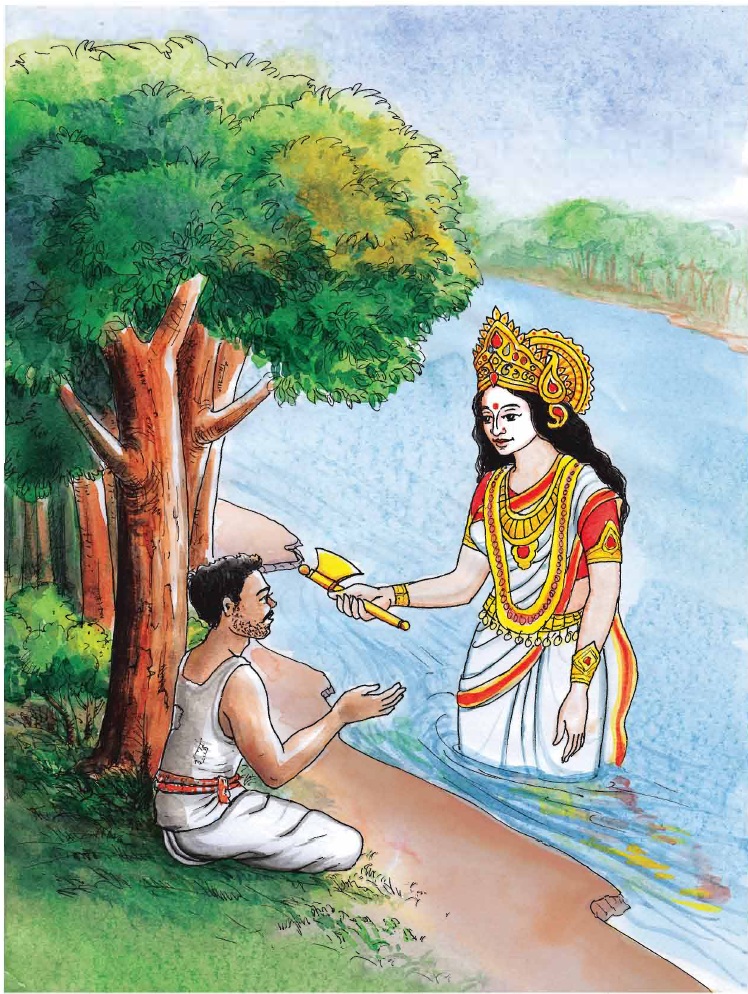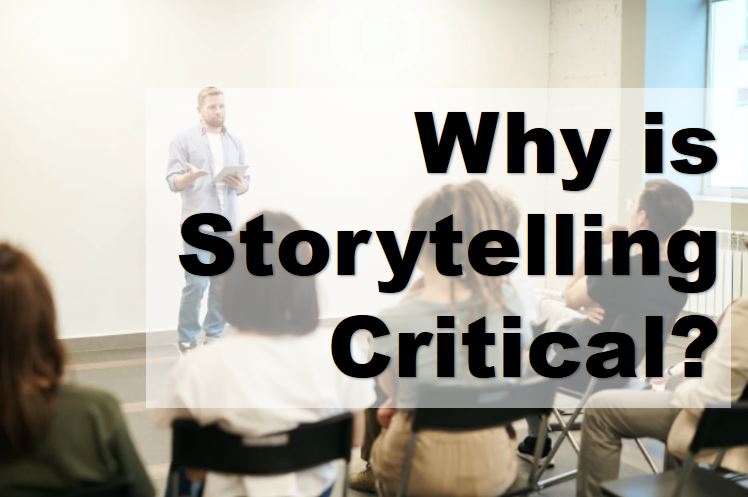Why is Storytelling Important?
Presentations are a powerful way to communicate your ideas.
In the digital age, presentations have become more and more important. They are the vehicle that enables you to share your message with an audience, whether it be one person or a hundred.
A presentation is a type of performance where you need to get your point across in a clear and concise way. It might be about how to use something or what makes you different from the competition. Here, stories play a critical role. Let us understand how and why is storytelling important in presentations?

What are the Benefits of Storytelling in Presentations?
Storytelling is a powerful way to connect with an audience. It not only engages the listeners, but it also makes them more receptive and more open to what you are saying.
It is important to remember that stories are not just about telling a story; they are about making the listener feel something. They should be meaningful and memorable.
A good storyteller will have an understanding of their audience, know how to engage them, and know how to keep them captivated from beginning to end.
In an article by Paul J.Zak an American neuroeconomist wrote, they found that character-driven stories do consistently cause Oxytocin synthesis. According to their research for Social animals who affiliate with strangers regularly, stories are a great way to share important information and values.
Stories that are personal and emotionally compelling tap into more of the brain and are therefore recalled better than a bland list of facts.
5 Benefits stating why is storytelling important:
Grabs the attention of your audience.
Acts like a catalyst to invoke emotions in the listeners.
Hooks in the story help keep the audience engaged even when the story is told in parts.
Stories can be remembered more easily than simple facts or data.
Feels real because people start imagining stories in their minds.

How can we create a structure of a story?
A story needs three main components: a protagonist, conflict, and resolution. The protagonist is the character that the story revolves around. The conflict is the problem or challenge faced by the protagonist. And finally, resolution is what happens to the protagonist as a result of this conflict.
The Protagonist:
A protagonist is the main character of a story. In most cases, they are trying to solve a problem and the story will follow their journey or the consequences of the problem. The protagonist’s decision-making process can determine how the audience perceives them.
The Conflict:
Conflict is the backbone of any story. It is important for the author to use conflict in order to build a solid plot. Without conflict, there would be no story. Conflict can come in many different forms such as: emotional, physical, or verbal. Authors can also create external or internal conflicts with their characters or place their characters in situations where they are required to make decisions that will either help them move the system or have to move out of it.
The Resolution:
All the tension that you have created in the protagonist’s life by the conflict will be released at this stage. The conflict has to end here. If the protagonist wins, it is a happy ending, if he loses it is a sad ending. Let me tell you a little secret. “Always make sure that the HERO WINS”.
Structure of Storytelling:

Exposition Meaning: Provide a brief summary for each of the main characters. Explain the environment you’re setting your story in and anything else that is important to know about your world.
Denouement Meaning: The end of a movie, play or other narrative work to tie up any loose ends and resolve issues.
Story Example: The Woodcutter Story

Exposition:
Long ago, there lived a woodcutter in a remote village. He was an honest person and he had an upright character. Every day, the woodcutter would go into the nearby forest to cut down trees for timber.
The woodcutter then sold these goods to merchants and finally earned some money of his own. He earned just enough to get by, but he was happy with his simple life.
Inciting Incident:
One day, he was cutting down a tree close to the river when his axe fell into the water. He almost jumped in but realized the water was much too deep for him and there was nothing he could do about it.
Luckily on his way home he found another axe and didn’t need to cut down any more trees with just one blade. He became very worried and thought about how he could earn a living now. He was very sad and prayed earnestly to the Goddess.
The Goddess appeared to him and asked, “What is the problem, my son?” “I come from the forest, and my axe fell into the water,” explained the woodcutter. “Please could you return it?”
The Complication & Climax:
The goddess reached into the river and pulled out a silver axe. She said, “Is this your axe?” the woodcutter knew he had an iron axe. He said, “No”. So she reached back in again and pulled out another one; this one shone from a golden light as soon as touched her. I don’t think this axe is mine.
The woodcutter said after looking at it for a while. The Goddess felt like smiling, but she didn’t and just said, “Be sure before you give up on it.” It’s not gold so I can’t cut any trees with this.
Reversal:
She smiled and finally put her hand into the water again. She pulled out his axe and asked, “Is this your axe?” “Yes! That’s mine,” said the man excitedly.
Resolution and Denouement:
Impressed by his honesty, the Goddess rewarded the man with an iron axe – and also gave him two other axes as a gift.

Storytelling Techniques to Improve Your Presentation:
It is an art form that has been used for centuries to captivate audiences and convey a message. It is also a powerful tool to use in presentations.
Here are some storytelling techniques that you can use in your presentation:
- Start with the “hook” – the story’s inciting incident or event.
- Tell a story from the perspective of one of the characters.
- Use dialogue to create suspense and tension.
- Use flashbacks to provide background information on your topic.
- End on a cliffhanger, which leaves your audience wanting more.
Conclusion and Key Takeaways
We have seen how storytelling is a powerful tool that can be used to persuade and influence people. It is not the same as just telling a story. In order to tell a good story, we need to understand what makes it good. There are three key elements that make up a great story:
Protagonist who has an active role in the story
Compelling conflict
A satisfying resolution
In conclusion, storytelling is a powerful tool for Presentation and persuasion because it can make people feel like they are part of the story.
